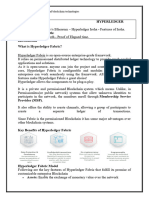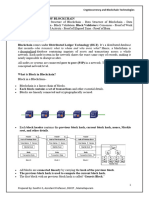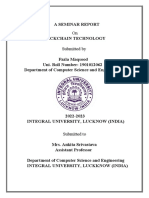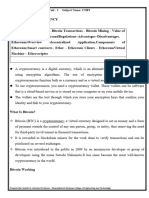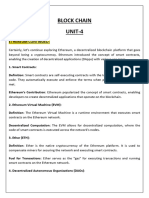100% found this document useful (1 vote)
539 views8 pagesBlockchain
notes
Uploaded by
Niranjana VadivelCopyright
© © All Rights Reserved
We take content rights seriously. If you suspect this is your content, claim it here.
Available Formats
Download as DOCX, PDF, TXT or read online on Scribd
100% found this document useful (1 vote)
539 views8 pagesBlockchain
notes
Uploaded by
Niranjana VadivelCopyright
© © All Rights Reserved
We take content rights seriously. If you suspect this is your content, claim it here.
Available Formats
Download as DOCX, PDF, TXT or read online on Scribd
/ 8








